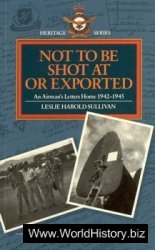Following the end of World War II, former servicemen found a large number of nonscheduled carriers in the U. S. with surplus transports. Among these companies is Fireball Air Express, started by Charles Sherman and Stanley D. Weiss in November 1945. Employing Douglas DC-3s, this airline begins transcontinental all-cargo operations from its base at Long Beach, California, to New York, with intermediate stops.
In 1946, the Sherman-Weiss venture is renamed Standard Air Lines and is granted a CAB certificate as a “Large Irregular Carrier.” Passenger flights begin in 1947, during which year Charles Sherman leaves the company. A year later, in December 1948, the CAB rules that irregular carriers may make only eight roundtrip transcontinental flights each per month.
As the postwar travel explosion begins to fizzle in 1949, Standard joins its Burbank-based rival Oxnard Air Freight (formerly Viking Air
Lines) in forming the North American Airlines Agency (NAA). This ticketing organization allows the two officially independent carriers to coordinate their cross-country flights, double the number of aircraft and flights available, and get around the CAB monthly restriction.
Other large irregulars, including Twentieth Century Airlines, Trans-National Airlines, Trans-American Airways, and Hemisphere Air Transport, join this consortium in January 1950. The members pool their aggregate point-to-point route and 8-per-month roundtrip authorities granted by the CAB ruling of 1948, plus their 14 DC-3s and a DC-4, and inaugurate a coordinated transcontinental schedule at the cut-rate one-way figure of $99, $160 roundtrip.
Technically retaining their independence, the consortium members, with Weiss as CEO and coordinating activities via their ticketing organization, come to act as a single airline and are so perceived by both the public and other airlines and the CAB. Fares are kept low by reducing luxuries; indeed, NAA is the nation’s first “no frills” airline. These combined services prove extremely popular with the public, but not the trunk lines or government regulators.
In 1951, the combine introduces additional DC-4s. After purchasing the last DC-4 of Delta Air Lines on June 15, 1953, NAA appeals to the CAB for new routes. In late 1954, NAA agrees to purchase all of Eastern Air Lines’ surplus DC-4s plus $1 million worth of spare parts. It also reports passenger boardings of 194,000, a total higher than the combined total for the country’s three smallest regular carriers.
Early in 1955, the carrier acquires new DC-6Bs and on May 1 begins nonstop transcontinental flights, having already become an international operator on April 5 by starting DC-4 service from California to Tokyo via Honolulu. When Eastern Air Lines encounters difficulties in receiving the aircraft purchased to replace the DC-4s sold to NAA, President Weiss initiates the first sale-leaseback agreement in industry history and sells back the spare parts without profit.
Both competitors and the CAB remain extremely displeased by NAA’s aggressive expansion. The former, claiming that NAA has violated the 1948 irregulars ruling, demands the grounding of the nontraditional operation. On July 1, the CAB revokes the group members’ certificates and orders the combined airline to cease operations. While the matter is hotly argued by lawyers, the partners go on to fly 272,000 passengers on the year and to earn revenues of $15 million. Meanwhile, the CAB, on November 15, creates a whole new class of “supplemental air carriers.”
In January 1956, the regulatory agency denies an NAA application requesting exemption from certification rules. During the spring, NAA, as the result of a suit by the airplane builder North American Aircraft Company, changes its name to Trans-American Airlines and amends a second, pending exemption request. In July, the CAB again reject’s the carrier’s approach. Once more, Weiss appeals.
The CAB denies Weiss’ final bid in January 1957 and the matter is referred to the U. S. Supreme Court for settlement. Following a pro-CAB decision on April 23, the irregular is disbanded.




 World History
World History









